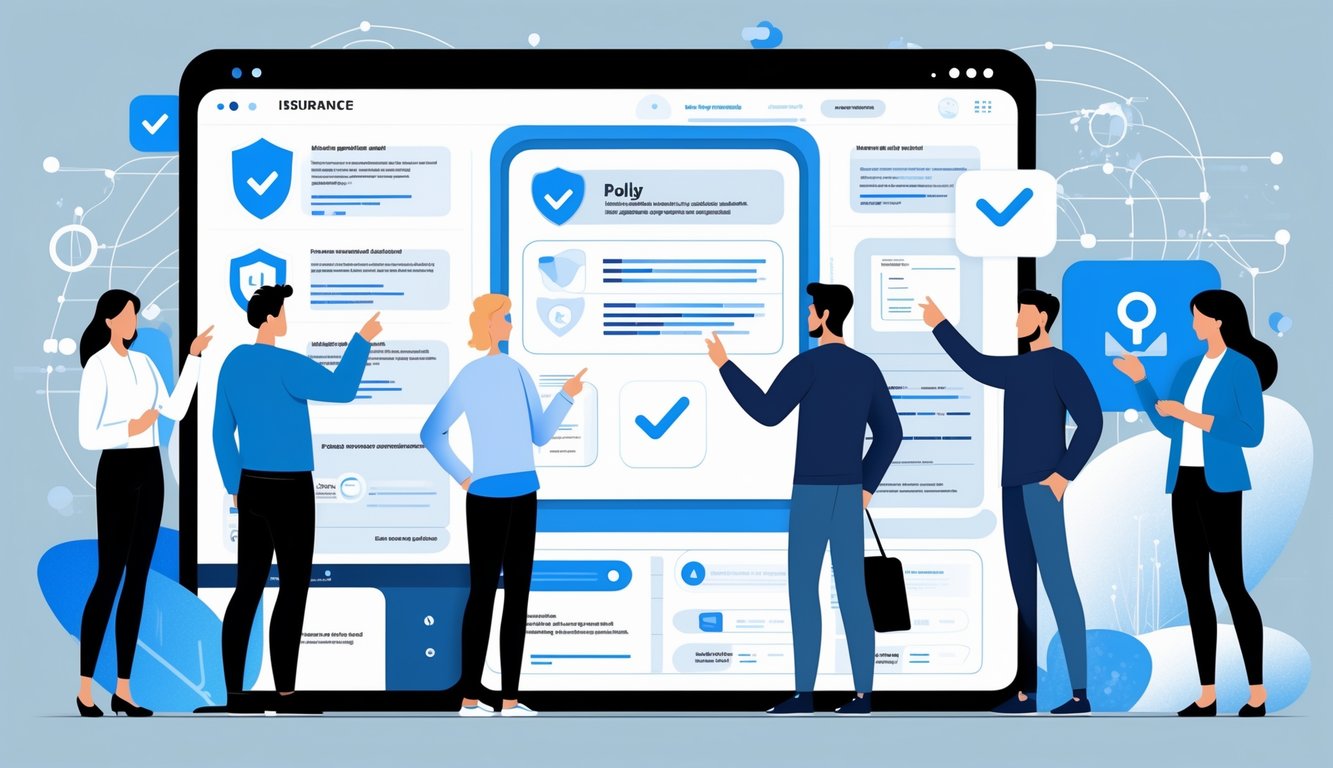The digital insurance experience is really changing the way you handle coverage.
Things feel faster, a bit clearer, and honestly, just easier to use.
Now you can manage policies, file claims, and get support through digital tools that save time and cut down on paperwork. This shift puts you in the driver’s seat, giving you more control and easier access, but you still get that personal touch when it matters.

Insurers keep closing gaps in their digital services.
You can now book experts, track claims, and use AI features for better cost estimates and benefits checks.
Most people prefer online channels for routine stuff, but you can still call for complicated questions or just to hear a human voice.
If you understand these changes, you’ll probably get more out of your insurance.
Key Takeaways
- Digital tools make policy management and claims easier for you.
- Better digital services try to balance automation with real human support.
- AI features give you clearer cost estimates and benefits info.
Key Elements of a Modern Digital Insurance Experience

Modern digital insurance puts you in control with smart tools and clear info.
It makes complicated stuff like finding providers, tracking costs, and managing your plan way simpler.
You get easy access, quick support, and options that actually fit your needs.
AI-Powered Virtual Assistant Capabilities
AI-powered virtual assistants answer your questions fast and guide you through insurance steps.
You can chat, text, or speak to get real-time responses any time of day.
When things get tricky, these assistants can connect you to a real person, so you don’t lose the personal touch.
They also auto-fill claim details, which speeds up claim submissions.
Uploading bills and checking claim status gets a lot easier with these digital features.
That means less waiting and fewer mistakes.
MyCigna’s member portal, for example, uses virtual assistants to centralize support and handle repetitive stuff for you.
Personalized Provider Matching Solutions
Finding the right healthcare provider can make all the difference.
Personalized matching tools look at your plan and preferences, then suggest doctors, clinics, or specialists nearby.
You can compare prices and reviews, making it easier to choose with confidence.
These tools also check if you need prior authorizations.
They help you avoid surprise bills by making sure your provider is in-network and covered.
Platforms like Cigna Healthcare keep your data and options in one spot, so you can find what you need without a hassle.
Real-Time Cost Tracking and Estimating Costs
When you track your healthcare spending in real time, you can stick to your budget.
Digital tools show you what treatments, meds, or procedures cost as you go.
You can estimate future costs before booking appointments.
Updates on deductibles, copays, and out-of-pocket maxes help you dodge surprise bills.
Some platforms send mobile alerts and even sync with wallets like Google Wallet, so your digital ID and payment info are always handy.
Digital Plan Selection and Open Enrollment Features
Picking or changing your insurance plan during open enrollment is way easier with digital selection tools.
They walk you through step by step, letting you compare plans side by side for coverage, cost, and benefits.
You can fill out applications online and upload documents without ever going to an office.
If you get stuck, customer advocates or agent teams usually stand by to help.
These digital tools make enrollment faster and less of a headache.
Enhancing Customer Value and Outcomes Through Digital Insurance

Digital insurance tools let you manage health benefits and claims with less hassle.
You get a clear look at your coverage, bills, and care options, so you can use your insurance better and plan expenses.
Streamlined Claims and Bill Payments
You can submit claims quickly with digital tools that pull claim details right from your bills.
This cuts down on paperwork and mistakes in claims processing.
When you upload a medical bill, the system reads it and updates you on the claim status, so you don’t have to chase it down.
Digital breakdowns of deductibles, out-of-pocket costs, and payments make it easier to track bills.
You can avoid missing due dates and keep your finances on track.
If you run into trouble with claims or billing, customer service is much easier to reach.
Maximizing Health Benefits and Benefits Coverage
Digital platforms let you check your benefits coverage on the spot.
You can see what’s covered and what you’ll owe before you get care.
Tools that match you with in-network providers based on your preferences, like location or language, help you find the right doctor fast.
Early access to member portals means you can prep for new plans and understand your benefits before coverage starts.
This helps you make smarter choices during open enrollment or when your care needs change.
When you know your benefits, you can use your insurance smarter and get better health results.
Mitigating Financial Surprises and Healthcare Costs
Nobody likes surprise medical bills.
Digital tools give you real-time cost tracking, so you can avoid them.
You get alerts about your deductible and how much you have left to pay out-of-pocket as you get care.
By comparing provider prices and estimating costs ahead of time, you can pick care that fits your budget.
This kind of transparency takes a lot of the stress out of medical bills.
When you know your costs, you can focus more on your health and less on the money side.
If you want more info on how these digital tools are changing things, check out Cigna’s new AI-powered digital tools for customers.
Frequently Asked Questions

Digital insurance tools help you get clear info about coverage, costs, and providers.
They make claims faster and plan selection less confusing.
You can track expenses and get personal support without long waits.
How do digital platforms improve the insurance buying process?
Digital platforms let you compare plans and prices easily.
You get real-time cost estimates, so you can pick what fits your budget.
You can check your policy details online anytime, which means less paperwork and fewer phone calls.
Which technologies are transforming customer service in insurance?
AI-powered virtual assistants answer questions fast and in plain language.
Personalized provider matching tools recommend doctors and services based on your needs.
Real-time cost trackers help you keep an eye on deductibles and out-of-pocket expenses.
What factors contribute to a high rating in insurance digital experience studies?
Ease of use, clear communication, and quick claim status updates all boost satisfaction.
Tools that help you plan costs and find care options matter, too.
Fast support access is a big plus.
How do consumers benefit from digital claims processing?
You can upload bills online, and claim details get auto-filled for quicker submissions.
Digital updates keep you in the loop about claim status and decisions.
This means fewer mistakes and faster reimbursements.
What are the main challenges customers face with digital insurance services?
Some people still find insurance terms confusing, even online.
Tech issues or a lack of digital skills can slow things down.
Sometimes, it’s tough to get live support for complicated situations.
How do insurance companies measure digital customer satisfaction?
Insurance companies keep an eye on how people use digital tools like virtual assistants and cost trackers.
They ask for feedback through surveys to find out if their platforms make sense and actually help.
They also check how fast they handle claims and requests online.






